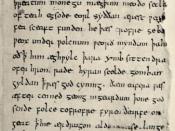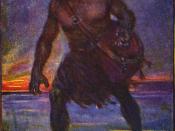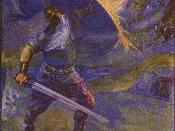This is an essay in which I compare Beowulf to the 13th Warrior. There are many parallels between the two wrks. It shows that we still use ideas today that were present hundreds of years ago. The use of language, archetypes, and imagery are prevalent to explain the relationship between the adaptation and the original work. Questions:Do you see any other parallels not covered within the paper? What common thematic views are seen in the two works? What other archetype are present in both?
In this modern era, man undertakes the challenge of conveying ancient stories of heroism and bravery onto the silver screen. These adaptations sometimes attempt to reconstruct timeless epics, and present ancient life to modern society. The epic Beowulf is a glimpse into the art of storytelling through the words of the Viking civilization. The epic is a narrative about a hero who confronts adversity with courage and strength.
The hero, Beowulf, must use his great power to save the lives of his people from the evils that lurk in the darkness. The 13th Warrior is an adaptation of this timeless epic and displays numerous similarities with a modern spin, allowing present day society a glimpse into tenth century England. There are many parallels between the two works illustrated through thematic expression and symbolism. The use of language, archetypes, and imagery are prevalent to explain the relationship between the adaptation and the original work.
The use of language in The 13th Warrior is extremely important is capturing similarities between the two works. At the beginning of the movie, Latin is the language used as a medium between the Arab and the Vikings. The language is symbolic because Beowulf was originally written in Latin, so that all could understand the narrative as it is being conveyed. Both...


